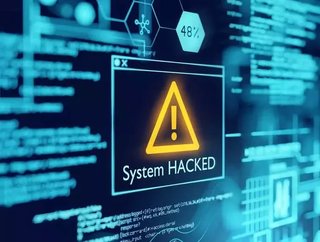Three core pillars to a secure digital transformation

How can businesses ensure their infrastructure remains secure during digital transformation? DXC Technology's Mark Hughes explains
Since the turn of the century, CEOs have focused their attention on implementing digital transformation. This presents a major opportunity to deliver innovative new business models, create new digital customer experiences, and optimise and automate processes to enhance business performance.
Despite these advances, organisations are increasingly under threat to defend the expanding cyber-threat landscape to prevent attacks on digital technologies that are being used to transform the business.
For businesses to prevent cyberattacks from derailing their digital initiatives, security needs to be part of the very fabric of the digital enterprise.
Organisations must deliver a secure digital transformation by building security at the core. This will transform businesses and ensure they become ‘secure to the core’, with a consistent framework for secure digital transformation.

Continuous monitoring
The first key pillar for securing digital transformation is for organisations to monitor everything (both IT and operational technology) across the business.
The modern enterprise requires a plethora of security tools to secure their infrastructure and increasing number of endpoints – networks, firewalls, servers, storage, devices, applications, data, etc.
These tools generate an enormous volume of data each day, making it almost impossible to identify and respond to true cyber-threats in a timely manner.
With the right security monitoring solutions, organisations can detect threats quickly, respond to attacks rapidly, and defend the enterprise from security breaches by applying intelligence and automation to handle the enormous volume of incidents that occur across the globe.
Verify and encrypt
In addition to monitoring everything, two additional critical pillars are essential to secure an enterprise: verify everything and encrypt everything.
Verify everything is about adopting a zero-trust security approach to digital identity and access management. For this priority to be considered successful, security should no longer be about “where” but instead be about the “who”.
Identity and access management (IDAM) can effectively establish a logical perimeter that enables digital transformation. The right IDAM solutions prevent unauthorised access to enterprise information using multiple authentication methods with user access management and provisioning.
Encrypt everything is about minimising the risk of unauthorised or unlawful processing of business-critical data and avoiding accidental loss and destruction or damage to data.
All sensitive data requires encryption and/or tokenisation using trust services (PKI, certificate and key management), encryption solutions, and rights management. The right data protection and privacy solutions encrypt sensitive data and prevents data loss from malicious cyberattacks.

Implementing an effective defense
If organisations wish to become secure to the core with their cyber-defence, they will need to adopt an approach that provides next-generation digital services with a high degree of automation through a security platform that applies lean process, deep analytics and intelligent automation to the security information and event management (SIEM) process.
The underlying technologies within this platform are often described as SOAR (security, orchestration, automation and response).
IDC, meanwhile, describes these cybersecurity technologies as AIRO (Analytics, Incident, Response, and Orchestration). The AIRO technologies trace what is required in the Security Operations Center (SOC) to protect the enterprise network through to threat detection and formal remediation.
Whether organisations decide to adopt “SOAR” or “AIRO” technologies, either way, they must apply automation and orchestration to cyber defences in order to keep up with the sheer volume of data and incidents generated across a wide array of infrastructure and endpoints.
Swift responses
Despite the increasing occurrence of cyberattacks on organisations, there is equally an increase in the number of sophisticated methods to counter the heightened threats of hackers when it occurs.
It is crucial for businesses to get the security basics right so to enable their digital transformation journey.
This means remembering and adopting the three key security pillars:
- Monitor everything (with cyber defence solutions)
- Verify everything (with digital identity solutions)
- Encrypt everything (with data protection solutions)
This article was written by Mark Hughes, Senior Vice President and General Manager, Security at DXC Technology
- Employees can help prevent phishing attacks, say BlackBerryCloud & Cybersecurity
- 5 mins with Tom Kellermann, cyber security leader at VMwareCloud & Cybersecurity
- Exec Q&A with Stephen de Vries, IriusRisk CEO and co-founderCloud & Cybersecurity
- Open Systems appoints new Chief People Officer, Alaska MayCloud & Cybersecurity






